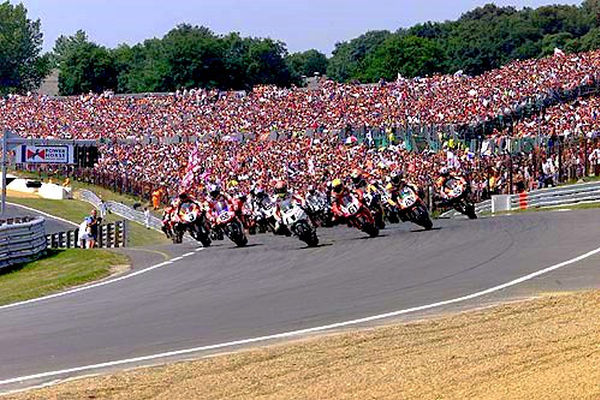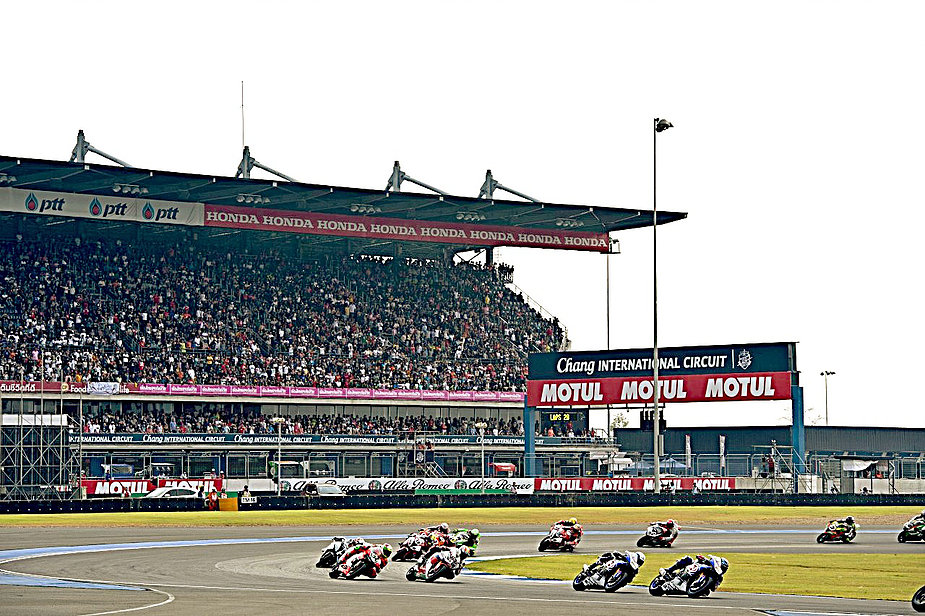 Neil Simmons
Neil Simmons
This Quick 10 feature is a double-article as I caught up with a driver who raced at the 24 Hours of Dubai recently.
The feature is a unique one in terms of motor racing as Anna herself admits that she never followed racing but has always had an interest in cars.
At the end of her Quick 10 is her diary of the 24 Hours of Dubai. She is a bronze rated driver, finished 3rd in the 2013 Norwegian GT Championship, has competed in the Italian GT Championship and in the Gatebill Extreme Series.
Her name is Anna Rathe and these are her Quick 10 questions with me:
1. What is your favourite circuit and why?
To date I have never raced on a circuit which I didn’t like. There are circuits that suit me better, yes and therefore brings back better memories maybe, but as long as I can race on them I like them. I like to say my favourite circuit is the next one I am racing at (which at the moment means I don’t know!).
2. Who is/was your racing idol?
I don’t really have one. I never followed racing much to be honest, maybe I shouldn’t say.
3. Who would you regard as your toughest opponent?
Honestly, myself.

4. Considering racers of all time, you are a team principal and money is no object. Which two racers would you have in your team?
Oooh this is a question where my lack of motorsport interest bites me. I really don’t know.
5. If you could invite four famous people to dinner (past and present), who would you invite?
Barack Obama, Gloria Steinem, Simon Sinek and Aksel Lund Svindal.
6. Personal racing number? What is it and the reason behind it?
That is definitely #35. I haven’t raced with that in years (although now would be a good time considering my age), but it comes from my first race car. I kind of had two Nissan GT-Rs at one point.
7. What is the best race you have been involved in?
Definitely the Dubai 24h 2017! I have always been drawn to endurance racing, thinking it would suit me well. I was proven right.
8. Is there a race or series you have not competed in, that you would like to or had wanted to?
Blancpain Endurance Series. But for now, I’m hoping to do more 24H series.

9. How did you get into motor racing? What ignited that spark?
I just wanted to. I don’t know how better to explain it. Ask my family and I’ll promise you they will confirm to you they didn’t see it coming.
10. What is the best advice in racing you have been given?
“Go out there and smile!” From my team in Reiter Young Stars 2016. Awesome guys!
Race Report: My 24 hrs Endurance Debut by Anna Rathe
Last week I got to take on what has always been the ultimate challenge for a racing driver: a 24 hours endurance race. And it simply had it all: sun, smiles, hugs and laughter. But no secrets, it was also serious, busy, hard, tough, sweaty and exhausting. This is the story.

The 24Hseries event took place 9th-14th of January, in the desert-ish surroundings of Dubai Autodrome. Winter in Dubai means lovely weather and summer-like temperatures for a Norwegian. The 5399m long circuit was new to me, but I had done my homework meticolously, studying track notes and videos to be prepared. And already Monday afternoon I walked the full circuit for the first time. The track is a mix of everything; two long high speed long straights followed by hard braking, hairpins, elevation changes, high speed corners and a Sector 1 which I knew from my preparations would be the most difficult part.

My team Reiter Engineering, which I have been racing for since 2016, arrived early Tuesday morning and got everything ready for the race week: the pit box, the tools, the parts, and quite obviously the car. We were going to race the #246 KTM X-BOW GT4, the car I’ve learned to appreciate so much during the 2016 European GT4 Championship. We were competing in class SP3, which is more or less GT4 spec.
This was the first time me and my team mates for the race got together to start working. KTM and Reiter Engineering had made an all-female driver line-up for the first race of the season, consisting of Belgian Naomi Schiff, Australian Caitlin Wood, Swiss Marylin Niederhauser, and me. Naomi and Caitlin I both knew from Reiter Young Stars, Marylin being new to GT racing coming from Formula 4. We juggled seat position, mirrors, pedals, steering wheel and driver changes. We all got along really well, highly motivated to do a good race.

Wednesday morning, bright and early at 7AM, we met at the track again for a team track walk. Our team manager Tomas Enge, us girls and the team engineers inspected every corner, curb and surface to know what to expect when hitting the track for the first time in the afternoon.

After lunch it was time to get in the car. Both me and Caitlin got a few laps on the circuit, a few tweeks on the car and all four of us continued the testing on Thursday morning. I have to say, the Dubai Autodrome really is amazing. As expected, Sector 1 was the difficult one, but it was also giggleing fun. I’ve always loved jumping curbs and high-speed-to-slow-corners, and the circuit has plenty of that. I hadn’t yet found the rhytm or the pace I wanted, but it was coming together step by step. Plus, the other girls killed it and made me confident we could have a good result in the race.

For qualifying we did some strategic choices, and Caitlin went out and put us P8 in class for the race (P55 overall). We were fairly happy with that, it was more or less where Tomas wanted us to be and we were confident our race pace would be good.

Sun set, and it was time for night practice. Being in a mixed field of a tad short of 100 cars, half of them faster and half of them slower than us, made the night racing quite interesting. The dark itself was not so much the problem, it was the constant handling of all the traffic that put an extra dimention to it. I can’t claim I had it all fully under control after my night test, but I felt confident I would survive it.
Friday morning and race day. When I got to our pit box, Mr. Reiter himself had arrived and asked me how I felt. Honest, and with a twinkle in my eye, I responded “Well, I’m the driver who had to get here early on race day to do the warm up, so I’m the slowest”. We both laughed, and he said he believed us to be strong enough for a podium. I kind of secretly thought so too.
The remaining time before the race was like a calm before the storm. The atmospere in the pits were electric. And when Caitlin took our car to the starting grid, the excitement rose to a new level. The grid walk was full of people, spectators and team members, and us being an all-girls driver line up was an attraction in itself. I have no count of how many photos we did with enthusiastic racing fans, getting lots of thumbs ups’es for the race. The support felt a bit surreal.
Race start at 14:00, and Caitlin did a brilliant job for the first stint. She kept out of trouble in the huge grid of cars, she manuevered the car through the field, and by the end of her stint we were P4 in class and P46 overall! I jumped in the car second, driver change going perfectly to plan and I hit the track with a clear task in mind: To find a god rhythm in sector 1. And I did! At the end of my stint I had shaved 3 secs off my lap time and was consistently on race pace. You can actually see from the onboard me celebrating in the car on the long straight after my best laps. I was called in to hand the car over to Marylin.
As the driver change was done and Marylin headed out on track as the sun started to set, I was greeted by Mr. Reiter in the pit box. He was very happy about my performance, gave me a hug and congratulated me on an impressive stint. At some point I had been the third fastest driver in class out there. I couldn’t have been happier in that moment, knowing that what I had just done was some of my best work in a race car. Doing that in my first stint in my first 24 hours race was pretty good timing! I couldn’t wait to get back out there! First though, it was time for resetting and getting my feet back on the ground, I needed to drink, eat and rest until my next stint. My cave was a rental car in the parking lot.
Marylin hadn’t done many laps before she got hit by another car in a multiple-car crash and was sent off into a wall. Our car took some beating, and the repairs took just 1 minute short of 3 hours. No more realistic chances of a podium for us, but Reiter wanted to give us the opportunity to get as much experience as possible and put us back out there.

Unfortunately, before it was my turn to get back in the car again, our car had a second accident, which again put us in the pit for repairs. This time for 5 hours and 18 minutes. Now the only place we could possibly reach in class was last place, and I’m sure any other team would’ve called it a day and packed up. But everybody at Reiter Engineering went for it, the mechanics heroically putting the car back together, and about 4AM in the morning we were out on track again with Caitlin in the car for her second stint.
After Caitlin it was my turn to take on my first night stint in the race. I won’t claim I shined out there, constantly maneuvering traffic, but in the end I found some kind of rhytm and as I got quicker the task also got easier, obviously. But I took no risks, whatsoever, and brought the car safely home. I would have loved to have a second night stint in the race, but sun was already rising when I handed over to Naomi.

As I got ready to get back in the car again in the morning, Mr Reiter came to me and asked if I was ready for a double stint. Happy that he showed such confidence in me, and excited to get to test my stamina, I said I would love to try. An hour out in my stint our engineer Bernie Ehrlich called me up on the radio and asked if I was fit for another hour. I thought it through for a few corners, making sure I wasn’t taking any unecessary risks, and felt good about it. I confirmed I would do a double stint.

That second hour in the car was probably my best racing performance ever. I got consistently faster and faster, and found a great rhythm maneuvering thorugh the traffic. The last 20 laps was my fastest of the race, and I couldn’t help but smile ridiculously in the car. It’s like a dance, the symbiosis of the slower and faster cars on the track, all working together for a greater good. I have never had so much fun in a race car ever! In the end I set a 2.11.373, just 7 tenths off Caitlin who had the second fastest lap of the race. I can live with that.

By the time we took the chequered flag we were P16 in class and P72 overall. We had only done 336 laps, spending more than 8 hours in the pit box with repairs. Very, very far from the result we wanted, even very far from the result we had in us. But thanks to Reiter, who put us back out after both incidents, we all gained valuable 24 hours endurance racing experience. And I had fun. Lots of fun. And this is most certainly addictive!
I am forever grateful to Reiter Engineering and KTM for making the 24H of Dubai possible. Their support for this race has been massive from day one and I can’t thank them enough. Without them, this would have never happened.
24 hours endurance racing has an extra element to it, the extreme. I used to think it would suit me well. Now I know it suits me well. I really, really hope I get to do it again!
PS! For those of you who’d like an in-depth insight into our whole all-ladies team effort in the 24H of Dubai, check out the upcoming issue of Top Gear Magazine.
I will also be uploading lots of behind the scene footage over the next days, on my Facebook, Twitter and Instagram account. Join in if you like!
xx Anna
Photos: Joel Kernasenko (C)
For more information, please contact Anna Rathe
Email: anna@ratheoptimal.no
Facebook: AnnaRatheRacing
Twitter: @annarathe
Instagram: @anna_rathe
I would just like to thank Anna for taking the Quick 10 and would like to wish her the best for remainder of the season.
Neil Simmons
Twitter: @world_racing

 Neil Simmons
Neil Simmons
















 On the second lap of the race, Schlesser’s Honda slid wide at the Six Freres curve, just before the tight Virage Du Noveau Monde right hander. He crashed into a bank close to the circuit and the car erupted in flames. It was laden with fifty-eight laps worth of fuel and the magnesium bodywork just ignited. Schlesser stood no chance of survival.
On the second lap of the race, Schlesser’s Honda slid wide at the Six Freres curve, just before the tight Virage Du Noveau Monde right hander. He crashed into a bank close to the circuit and the car erupted in flames. It was laden with fifty-eight laps worth of fuel and the magnesium bodywork just ignited. Schlesser stood no chance of survival.












